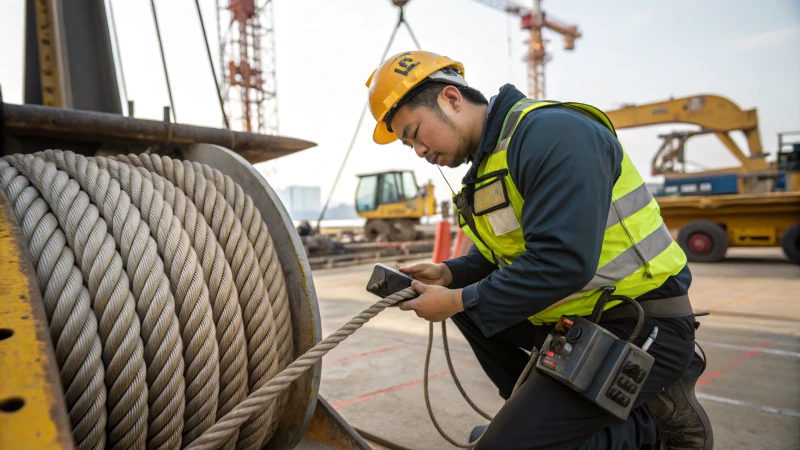
When your work involves steel wire ropes, understanding their safety and performance isn't just important—it's personal.
Inspecting steel wire ropes effectively involves ultrasonic testing, eddy current testing, and magnetic particle inspection. These methods uncover hidden internal and external damages, enhancing safety and reliability in high-stress environments.
I remember the first time I had to ensure the safety of steel wire ropes for a project. It felt daunting, almost like standing on the edge of a cliff, knowing that so much was at stake. But then I discovered ultrasonic testing. This method is like having X-ray vision—detecting cracks or voids within the rope that the naked eye would miss. It's fascinating how technology like eddy current testing can reveal surface defects, especially in corrosive environments like those near the sea.
And let's not forget magnetic particle inspection, which feels like magic, spotting external flaws that could be lurking in plain sight. Each of these techniques has transformed how I approach rope maintenance, ensuring every piece of equipment I use is up to the highest safety standards. The peace of mind it brings is invaluable, making every project not only more efficient but infinitely safer.
Ultrasonic testing detects internal damage in steel wire ropes.True
Ultrasonic testing uses sound waves to detect flaws within the rope.
Magnetic particle inspection is ineffective for external damage.False
Magnetic particle inspection is effective for detecting surface cracks.
How does ultrasonic testing enhance steel wire rope inspections?
Imagine having the superpower to see inside steel wire ropes! That's what ultrasonic testing offers, ensuring safety and reliability in every strand.
Ultrasonic testing enhances steel wire rope inspections by detecting hidden internal defects like cracks and voids, which aren't visible through visual checks. This method boosts safety and reliability, especially in demanding industries like construction and mining.
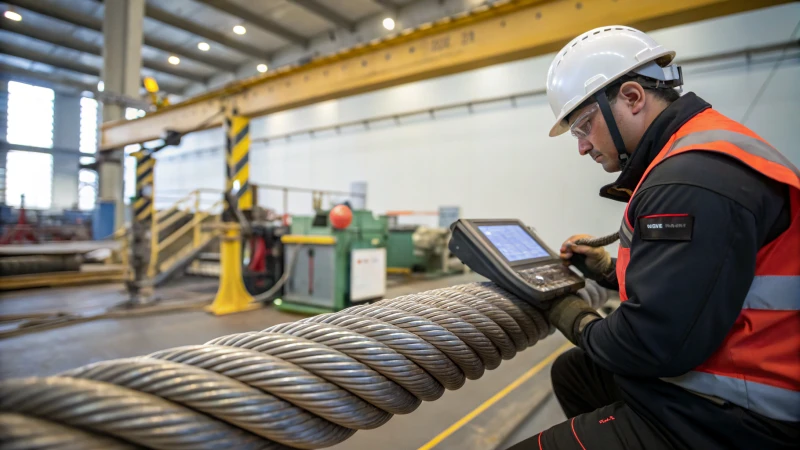
The Role of Ultrasonic Testing in Detecting Internal Defects
When I first learned about ultrasonic testing, I felt like I had discovered a hidden world within steel wire ropes. It’s like having X-ray vision! This technique uses high-frequency sound waves to peer inside, spotting sneaky internal defects like cracks and voids1 without damaging the rope. Just think about mining operations where ropes face extreme stress. Finding these hidden flaws early can avert disasters and save lives.
Comparing Ultrasonic Testing with Other Methods
I remember the first time I compared ultrasonic testing to visual inspections. It was like comparing a microscope to the naked eye! Visual checks are limited to surface-level issues, but ultrasonic testing dives deep into the rope's core. It’s often lined up against eddy current testing, which is great for catching surface issues like corrosion2, especially on offshore oil rigs where the salty sea air is merciless.
| Inspection Method | Type of Defect Detected | Industry Application |
|---|---|---|
| Ultrasonic Testing | Internal defects like cracks | Construction, Mining |
| Eddy Current Testing | Surface and near-surface | Marine |
| Visual Inspection | Surface-level anomalies | General |
Integrating Technology: AI and Predictive Maintenance
The integration of AI with ultrasonic tools is like having a crystal ball for predicting maintenance needs. Imagine being on a construction site and getting an alert about an impending rope failure before it happens. AI reduces human error by up to 25%, which is huge! These smart algorithms analyze data from scans and help us stay one step ahead, avoiding unexpected downtime.
Practical Applications Across Industries
Steel wire ropes are the backbone of industries like construction, mining, and heavy machinery. Using ultrasonic testing not only cranks up safety but also prolongs the life of these ropes, saving money in the long run. In logistics, where heavy goods are frequently moved, ensuring rope integrity is crucial for keeping operations smooth.
This comprehensive approach to inspections really emphasizes why embracing advanced technologies is key for safety3 and efficiency in various industrial settings.
Ultrasonic testing reveals surface-level defects in ropes.False
Ultrasonic testing is primarily for internal defects, not surface-level.
AI reduces error rates in ultrasonic testing by 25%.True
AI algorithms enhance accuracy, reducing human error rates by 25%.
Why Choose Eddy Current Testing for Surface Defects?
I remember the first time I encountered eddy current testing; it felt like discovering a hidden superpower for materials inspection.
Eddy current testing excels at detecting surface defects by rapidly and accurately identifying cracks, corrosion, and other flaws without harming the material, even on complex surfaces.
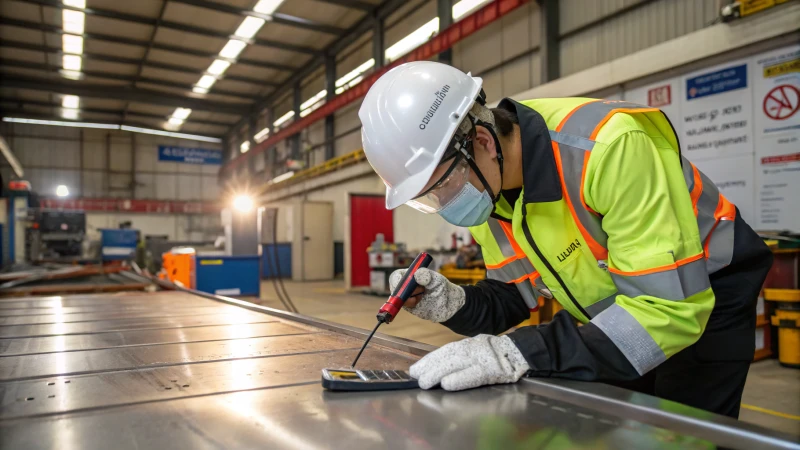
Understanding Eddy Current Testing
Imagine being able to see beneath the surface of a material without leaving a mark. That's what eddy current testing does. When I first learned about it, I was amazed by its non-destructive nature. This method uses electromagnetic induction — a concept that might sound like science fiction but is as real as it gets. A coil carrying an alternating current4 generates a magnetic field, which in turn induces eddy currents in the conductive material under scrutiny. Changes in these currents can reveal hidden surface defects like cracks or corrosion5.
Key Advantages
- Non-Destructive Nature: I’ve always been fascinated by how ECT can inspect components without any damage, preserving the integrity of the materials we rely on.
- High Sensitivity to Surface Flaws: Picture trying to find a needle in a haystack; ECT makes that possible by detecting the tiniest cracks and fatigue6 damage.
- Quick and Efficient: Time is of the essence in many industries, and ECT allows for rapid scanning of large areas, often saving the day when project deadlines loom.
- Minimal Surface Preparation: Unlike methods that require extensive cleaning, ECT requires almost none, which is a huge relief in fast-paced environments.
Applications Across Industries
| Industry | Application | Benefit |
|---|---|---|
| Aerospace | Aircraft hull inspection | Enhances safety and reliability |
| Automotive | Quality control in manufacturing | Ensures component integrity |
| Oil & Gas | Pipeline corrosion monitoring | Extends equipment lifespan |
| Power Generation | Turbine blade evaluation | Prevents unexpected failures |
Limitations to Consider
While eddy current testing offers numerous benefits, it isn't without its drawbacks:
- Limited Penetration Depth: It's like peering through a keyhole; you can see only so far. ECT is most effective for surface or near-surface flaws, which means deep internal defects might go unnoticed.
- Material Requirement: Since it only works with conductive materials, this could limit its application in certain scenarios.
If you're intrigued by the potential of ECT, I recommend consulting with a specialist7 or diving into industry-specific resources. They can provide guidance on integrating this technique into your processes seamlessly.
Eddy current testing is non-destructive.True
ECT inspects materials without causing any damage, preserving integrity.
ECT is effective for deep internal defects.False
ECT is limited to surface or near-surface flaws due to penetration depth.
How Can AI Improve the Accuracy of Steel Wire Rope Inspections?
Ever wondered how technology is reshaping the way we inspect steel wire ropes? AI is doing just that, with impressive precision and safety benefits.
AI enhances the accuracy of steel wire rope inspections by applying machine learning algorithms to data from cutting-edge testing methods. This innovation allows for early defect detection, minimizes human errors, and significantly boosts safety and reliability.
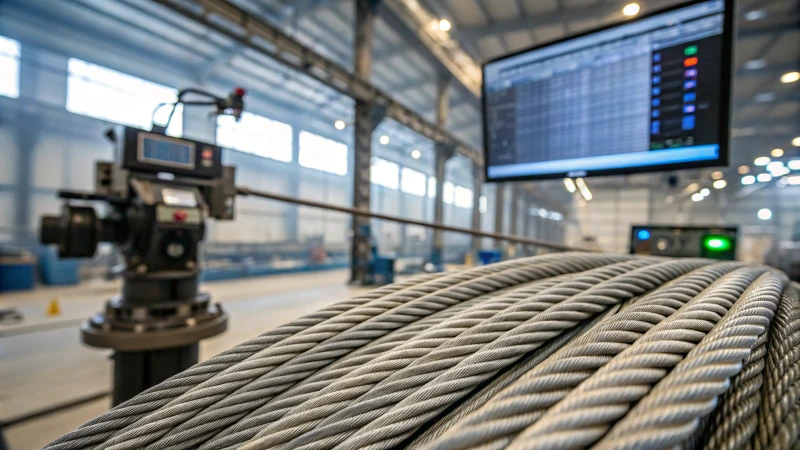
AI Integration in Inspection Processes
Imagine having a system that learns from every inspection it conducts—spotting tiny flaws before they become big problems. That's what integrating AI into steel wire rope inspections feels like. With machine learning algorithms8 at play, AI processes mountains of data from tools like ultrasonic, eddy current, and magnetic particle testing. I remember the first time I saw these algorithms in action; it was like watching a detective at work, picking up on the smallest clues that could indicate potential defects or wear.
Benefits of AI in Inspection
- Enhanced Precision: It's like having a magnifying glass that doesn't miss a thing. AI can catch those minute details that might slip by during manual checks.
- Reduced Human Error: We all know how fatigue can lead to mistakes. With AI, those risks drop significantly.
- Predictive Maintenance: Think of it as getting a weather forecast for your equipment. AI spots early signs of wear, letting you plan maintenance before things go awry.
Machine Vision Technology
The first time I saw machine vision technology in action, it blew my mind. This isn't just about having cameras; it's about using them intelligently with AI to find surface defects like corrosion or fraying. Remember the last time you missed something important because it was just too small to see? Well, this tech catches those sneaky issues effortlessly. A recent study9 showed a 25% drop in error rates with machine vision, underscoring its effectiveness.
AI-Driven Data Analysis
Imagine having a superpower that lets you see inside things—AI-driven data analysis is pretty much that for steel wire ropes. By crunching data from different testing methods all at once, it gives a full picture of the rope's health. Using a mix of ultrasonic testing10 and machine learning, I've seen internal cracks get identified three times faster than usual methods.
Table: Comparing Traditional vs AI-Enhanced Inspections
| Feature | Traditional Inspection | AI-Enhanced Inspection |
|---|---|---|
| Accuracy | Moderate | High |
| Time Efficiency | Low | High |
| Error Rate | Higher | Lower |
| Predictive Capability | None | Advanced |
The leap from traditional to AI-enhanced inspections marks a major step forward in keeping steel wire ropes safe and reliable. These advanced technologies not only boost accuracy but also extend the life of ropes with smart predictive maintenance. Just knowing that we're using every tool at our disposal to protect both equipment and people feels pretty great.
AI reduces error rates in steel rope inspections by 25%.True
A study showed machine vision and AI reduced error rates by 25%.
Machine learning algorithms slow down inspection processes.False
AI-enhanced inspections are more time-efficient than traditional methods.
Why is Regular Inspection Crucial for Steel Wire Rope Safety?
Ever wondered how to keep steel wire ropes safe and sound? Regular inspections are the key!
Regular inspection of steel wire ropes is crucial because it uncovers wear, corrosion, and hidden damage. By catching potential failures early through methods like ultrasonic testing, inspections prevent accidents and ensure safe operations.
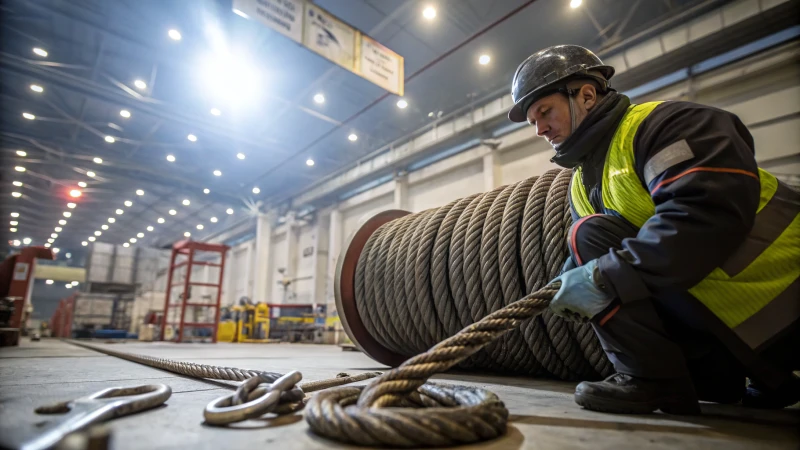
Understanding the Risks
Steel wire ropes bear immense loads, especially in heavy industries11 like construction and mining. Imagine the stress they endure daily, not to mention the environmental elements they face! Without regular checks, small issues like wear or corrosion can snowball into major problems.
Advanced Inspection Techniques
Modern technology is a lifesaver. Techniques like ultrasonic testing provide a non-destructive way to assess the internal condition of the ropes, revealing internal issues that are invisible to the naked eye. It's like having X-ray vision for your ropes! Then there's eddy current testing12, which is fantastic for spotting surface problems like corrosion.
| Technique | Benefits |
|---|---|
| Ultrasonic Testing | Detects internal damage |
| Eddy Current Testing | Identifies surface defects |
Benefits of Regular Inspection
From my experience, a stitch in time saves nine. Regular inspections can significantly extend the life of your steel wire ropes by catching small problems before they escalate. This proactive approach not only prevents unexpected failures but also boosts safety. Plus, with AI coming into play, inspection accuracy is through the roof!
Case Study: Implementing Inspections
Take it from a mining company that integrated regular ultrasonic inspections—they slashed rope-related incidents by 30%! It just goes to show how these practices can save costs and enhance efficiency.
The Role of AI in Inspections
Incorporating AI into inspections is like having a crystal ball. Predictive maintenance can foresee failures before they happen, thanks to detailed analyses from vast datasets. This advancement lifts safety standards to new heights.
Conclusion
In my view, while regular inspections are indispensable, combining them with cutting-edge tech like AI and modern testing methods offers unmatched safety management. By adopting these strategies, you're not just protecting equipment—you're safeguarding lives.
Ultrasonic testing detects internal rope damage.True
Ultrasonic testing provides non-destructive internal assessments, revealing hidden flaws.
AI increases error rates in rope inspections.False
AI reduces error rates by enhancing predictive maintenance and decision-making.
Conclusion
Effective inspection of steel wire ropes involves ultrasonic testing, eddy current testing, and AI integration to detect internal and external damages, enhancing safety and reliability in various industries.
-
Discover how ultrasonic testing identifies voids and cracks within steel wire ropes, enhancing their safety and reliability. ↩
-
Explore how different testing methods tackle corrosion, particularly in marine environments where steel wire ropes are extensively used. ↩
-
Understand how ultrasonic testing contributes to meeting industrial safety standards and preventing accidents. ↩
-
Understanding alternating current's role can help grasp how ECT functions, enhancing inspection strategies. ↩
-
Learning about corrosion detection via ECT provides insights into maintaining material integrity. ↩
-
Exploring fatigue detection with ECT aids in preventing equipment failure and enhancing safety. ↩
-
Consulting with experts ensures successful integration of ECT into your inspection processes. ↩
-
Discover how machine learning algorithms are transforming industrial inspections, improving accuracy and efficiency. ↩
-
Explore recent findings on the impact of machine vision in industrial inspections to understand its effectiveness. ↩
-
Learn about how ultrasonic testing is used to enhance internal defect detection in steel ropes. ↩
-
Explore why steel wire ropes are indispensable in industries like construction and mining. ↩
-
Learn how eddy current testing effectively identifies surface defects in wire ropes. ↩

